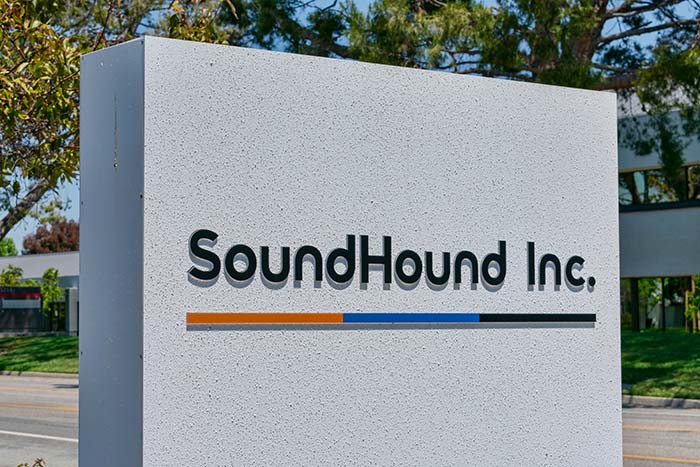As hype continues to build around the revolutionary impact that artificial intelligence (AI) is having on the global economy, some stocks are starting to garner more attention from traders than ever before.
This week, we’ll look at a sizzling AI stock that’s generating a ton of buzz.
SoundHound AI (Nasdaq: SOUN) has been making waves lately thanks to a slew of media touting its conversational AI technology and high-profile customer wins, including a promising new partnership with chipmaking powerhouse Nvidia.
Seemingly overnight, it has become one of the most actively traded stocks on the market, with shares enjoying a meteoric rise over the past couple of months.

Naturally, whenever a stock’s price doubles… triples… or even quadruples in a very short period, investors start licking their lips. They simply can’t help themselves.
But just because a stock is on a tear doesn’t mean you should try to get in on the action. Instead, ask yourself: Is the sizzle behind this hot stock justified?
In this case, a deeper look at the company’s financials reveals some red flags.
While the top-line numbers look impressive at first glance – revenue grew by over 47% to $45.9 million in 2023 – the company continues to bleed cash.
It posted a net loss in each of the past three years despite its rising revenues. And on an adjusted EBITDA (earnings before interest, taxes, depreciation and amortization) basis, SoundHound lost $35.9 million last year.
Free cash flow, a sound measure of a company’s ability to generate cash, also tells a troubling tale. As you can see in the graph below, the company is miles away from being cash flow positive.

Clearly, SoundHound’s rising share price is a reflection of the broader AI euphoria rather than the company’s financial prospects. But to be doubly sure, let’s run the stock through The Value Meter.
Of the thousands of stocks scanned by my updated Value Meter system, SoundHound unsurprisingly sits over two standard deviations below the average. (Remember, the lower a stock’s ranking is, the more overvalued it’s likely to be.)
The reason for this is obvious.
The ratio of the company’s enterprise value to its net assets, or its EV/NAV ratio, is a staggering 95.6. That’s nearly 16 times the average of 6.1 for companies with positive net asset values.
And SoundHound’s average quarterly free cash flow was an abysmal -30.5% of its net assets over the past four quarters, compared with an average of 15.5% among eligible companies.
Even in the current AI mania, SoundHound’s nosebleed valuation looks completely out of step with reality.
It’s actually frightening that investors would put such a high premium on a business that has yet to prove its ability to generate cash inflows. Despite a recent capital raise that boosted its cash on hand to over $200 million, SoundHound will likely need to keep tapping investors for more money to fund its growth ambitions.
To justify its extremely rich valuation, SoundHound needs to prove it has a path to profitability and that it can fend off intense competition as tech giants pour money into “voice AI.” But the company’s track record of losses and cash burn provides little confidence on either front.
Until SoundHound can show meaningful earnings and cash flow, I urge you not to be too impressed by the surges we’ve seen in its stock price.
The crowd might be in love with the stock, but disciplined investors should be far more focused on its value – or lack thereof.
The Value Meter rates shares of SoundHound as being “Extremely Overvalued.”

If you have a stock that you’d like to have rated by The Value Meter, leave the ticker symbol in the comments section below.
